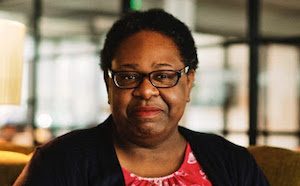
After more than 35 years of operation, TBI is closing its doors and our website will no longer be updated daily. Thank you for all of your support.
Diversity: Reaching out to create bonds
 In her latest column, the Creative Diversity Network’s executive director Deborah Williams urges the industry to learn from its experiences under lockdown
In her latest column, the Creative Diversity Network’s executive director Deborah Williams urges the industry to learn from its experiences under lockdown
Spring has sprung and in the UK we are starting to move out of the lockdowns and the pandemic structures that have been in place for the last year. We have seen good progress in the UK television sector in getting productions going again with the help of social distancing guidelines and the government-backed insurance scheme.
That’s great. However, I’m concerned that diversity is not properly included front and centre in conversations about how the industry recovers. So I want to continue this month looking at what a holistic approach to this process might feel like in practice.
Before we go any further, I would urge our industry at all levels to think hard about the issue, as well as how and when it comes into view. Is it something that is only a reaction to pressure coming from external circumstances similar to last year’s Black Lives Matter movement? Or is it something that is absolutely embedded in the way that we work? Let me break this down into what it means for me.
Fresh approach
Firstly, it means that when you look at going into production, and recruiting freelancers for roles, you don’t simply go back to the places you went before. Instead, think about the relationships you have built, the new ways you have connected with others and the new places you have discovered over the last 12 months. For example, the online spaces which were used for masterclasses, education and training.
The last year has made everyone think about new ways to reach talent that some of us haven’t reached before. It is critical that we think about how this translates into production. Rather than just virtue signalling through on-screen casting, we need to mature our approach and get to the real substance of what we are seeking to achieve.
Secondly, when you are putting together your guidelines for working together, how do you include diversity? Do you write about the behaviour, culture, principles and values that people should adhere to? Who takes responsibility for making sure that action is taken when needed? Who is the responsible adult on set for people to talk to about any negative issues they are experiencing?
How is disability and accessibility folded into your planning? Are you asking people what their access requirements are? Are you checking that any information you provide is in a format that they can read and understand?
Grassroots
Last month, I participated in a MIPTV session about ‘truth to power’. One of the most important things to have come out of the last year is how a lot of grassroots workers have been galvanised and feel empowered to speak truthfully about what is happening within our industry. About the things that either we didn’t know about, pretended we weren’t aware of, or just ignored.
We must continue to support those who are working hard and bringing genuine concerns to people’s attention.
When I started at CDN a few years ago, I would use a quote from painter and teacher William Merritt Chase to explain my understanding of diversity. It gets to the heart of how we as an organisation think about how this is wider than us.
“Diversity… is not casual liberal tolerance of anything not yourself. It is not polite accommodation. Instead, diversity is, in action, the sometimes painful awareness that other people, other races, other voices, other habits of mind have as much integrity of being, as much claim on the world as you do… And I urge you, amid all the differences present to the eye and mind, to reach out to create the bond that… will protect us all. We are all meant to be here together.”
Deborah is executive director at the UK’s Creative Diversity Network and has worked in arts, culture and the creative industries for more than three decades


